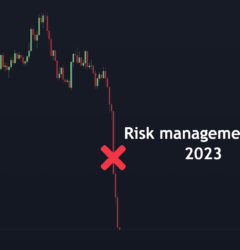11 Jun

Crypto lending is based on a relatively simple concept that borrowers can use their crypto assets as collateral to obtain a fiat or stable currency loan. At the same time, lenders provide the assets needed to get a loan at an agreed interest rate. It can also work in reverse where borrowers use fiat or stable coins as collateral to borrow crypto assets.
Lending in traditional markets is a fundamental concept that emerged many years ago with the definition of debt, but in cryptocurrencies, everything is just beginning.
Summer 2020 saw an influx of daily active users on platforms allowing their clients to lend and borrow a wide variety of cryptocurrencies. Most of these platforms support crypto signals.
Crypto trading guide on how the lending concept works in traditional markets
A lender is a financial institution that provides funds to you, as a borrower, with the expectation that you will return the funds with interest or commission after a while.
When borrowing from a bank, you will be assessed based on your credit history and collateral. The collateral can take real estate or other asset types that the lender will accept as collateral for the loan. Upon default on loan payments, the lender may withdraw your collateral to recover some or all of the losses.
Crypto trading guide: What is crypto lending?
Why was it necessary to explain the concept of traditional lending? Because the crypto markets are similar, but they are not the same.

First of all, all cryptocurrency lending services are based primarily on the Ethereum blockchain, although this is not required, which means there are no traditional banks or custodians. In addition, market participants manipulate completely different assets and must know where and how to buy them. The volatility in the crypto market is enormous, so expect your loans to be more than 100% secured. Use crypto signals to open and close transactions on time using crypto lending.
This is how the ecosystem of the crypto lending niche looks like:
- Crypto lenders are not banks; they can be centralized organizations like Genesis Capital, Unchained Capital, BlockFi, OTC tables or exchanges that use margin lending and trading or decentralized. The latter are protocols that rely on smart contracts to automate loan distribution and interest payments.
- Crypto borrowers usually want to trade and can pledge collateral in the form of cash or cryptocurrency. Interestingly, crypto lending platforms play the role of an intermediary in this game. However, there are centralized crypto lending services. In order not to lose all attachments, use crypto signals.
Best DeFi Crypto Lending Platforms
According to DappRadar, the top three crypto lending platforms in DeFi are Aave, MakerDAO, and Compound.
Of course, there are many other crypto lending services out there. It will be enough to familiarize yourself with at least three of them for the total amount of the blocked cost for educational purposes.
- Aave ($1.54 billion) Their website states that Aave is an open-source, non-custody protocol to decentralize lending and borrowing. Lenders provide liquidity to the market to generate passive income, while borrowers can borrow over-or under-secured. Lenders earn on aTokens that meet the ERC20 standard at a 1: 1 ratio to the assets provided. That is, giving 36 Dai, they receive 36 aTokens (36 aDai).

Interest rates are algorithmically adjusted based on supply and demand, but Aave allows borrowers to choose and cancel (at any time) a stable rate that changes less frequently. Borrowers are charged 0.00001% of the loan amount upon loan and 0.09% of Flash Loans, a developer-focused feature that allows you to borrow any amount of assets available without collateral.
- Compound ($621.2 million) This is an Ethereum money market protocol algorithm that allows you to lend or borrow funds and receive interest on providing liquidity. Rates are adjusted automatically based on supply and demand. As with Aave, the balances of the assets provided are represented by ERC20 tokens, but apart from Compound, they are called cTokens.
Now imagine that you have increased a certain amount of cTokens in your account after providing funds. You can now borrow up to 50-75% of the value of their cTokens, depending on the quality of the underlying asset. The Compound protocol sets aside 10% of the interest paid as reserves; the rest goes to suppliers. In order not to lose all your investments, use crypto signals.
- C.R.E.A.M. Finance ($250.6) This is a peer-to-peer lending platform focused on providing lending, exchange, payment, and asset tokenization services. The main feature of this platform is bringing liquidity to serviced assets, such as stable coins, management tokens, and others, such as ETH, LINK, and renBTC.
Effective September 1, 2020, CREAM switched from Ethereum to Binance Smart Chain (BSC). Farmers who create and deposit assets into liquidity pools on the Cream Swap platform receive Cream Pool Tokens (CRPT).
Summer 2020 saw an influx of daily active users in addition to projects such as MakerDAO, Compound, and Aave platforms allowing their clients to lend and borrow a wide variety of cryptocurrencies.
Of the $7 billion recorded across the entire DeFi niche, crypto lending platforms account for half of that amount. Based on these numbers, you can conclude that the migration of banking to blockchain seems like a natural next step for the entire crypto niche and will only grow.
Use crypto signals to make investments and close deals on time.





